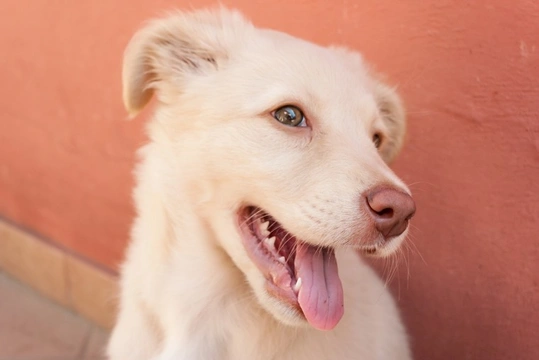
What traits can increase a dog’s risk of developing skin cancer?
Skin cancer is the most common type of cancer diagnosed in dogs overall, and the factors that combine to cause skin cancer in dogs are often cumulative, meaning that the longer a dog has been alive, the higher their risk factors for skin cancer.
However, skin cancer in dogs is not solely a condition of old age, and it is something that can develop in even younger dogs too, and in dogs of any type or breed.
While some cases of skin cancer in dogs do have a hereditary element to them, skin cancer as a whole is a relatively unique type of cancer as there are a range of specific physical traits that a dog of any type might possess that can greatly increase their risk of developing skin cancer.
These physical traits, combined with care and lifestyle-related factors, mean that skin cancer is more likely to develop in some dogs than others; but if you know that those traits and other factors are, you can greatly reduce the risks for your own dog.
With this in mind, this article will tell you the traits and risk factors that can increase a dog’s chances of developing skin cancer. Read on to learn more.
Developing sunburn, particularly repeatedly
Sunburn is bad news for dogs as well as people, and can be very painful and uncomfortable. Dogs may become quite distressed and even hurt themselves further trying to get some relief from sunburn.
But sunburn poses an even greater risk to dogs too, as it greatly increases their risk of developing skin cancer in later life. Even just one sunburn, particularly if bad, can do this, but if your dog burns frequently, their odds are even higher.
Always protect your dog from the sun if they are at risk of burning.
Having no fur
Dogs with no fur or only very sparse fur, like the hairless variant of the Chinese crested dog breed, are particularly vulnerable to sunburn and excessive sun exposure, and so, particularly at risk of skin cancer later on.
Always protect such dogs from the sun, with sunblock and even clothing.
Dogs that have little to no fur for other reasons, such as alopecia or other skin conditions, need similar care.
Having a short, single-layered coat
Dogs with very dense multi-layered coats might seem poorly equipped to thrive in hot summer sun, but this bulky fur helps to protect them from sunburn too.
Dogs with short, fine, single-layered fur, on the other hand, might seem less at risk of overheating, but their coats are also more likely to allow plenty of sun in and too much sun exposure or worse, sunburn, also increases their cancer risk.
Having white or very pale fur
Dogs whose fur is white or otherwise very pale will also be more exposed to the sun than those with darker coats, and so, are at greater risk of sunburn, sun damage and skin cancer in later life.
Having pink skin
Pale fur usually stems from pink (rather than black) skin, although dogs with darker fur can have pink skin too, and some dogs with coats that are a mixture of colours will have a mixture of skin colours too.
Pink skin is more vulnerable to the sun than dark skin, and will burn faster and be more prone to the effects of sun exposure.
Having a pink nose
Having a pink nose or pink patches on the nose place that part of the body at much higher risk of developing sunburn, as your dog’s nose doesn’t have any fur over it to protect it!
Skin cancer on the nose is one of the most common presentations of skin cancer in dogs, for this reason.
A dog whose nose is pink, or which has pink patches on their nose, will need to have sunblock applied to it quite vigilantly throughout the summer months, to reduce or negate the risk of sunburn and reduce the chances of the dog developing skin cancer on their nose later on in life.
Having exposed areas of skin
Even if your dog doesn’t tick any of the above boxes, if they have any exposed areas of skin or areas where the fur is sparser, these areas of the body are at increased risk of sun exposure, sun burn, and so, skin cancer.
The main culprit here is the very tips of the dog’s ears, in dogs whose ears are erect; on most dogs, the fur is a little sparser here and you can often see the colour of their skin underneath it.
Even on dogs with long, drooping ears, their ear fur might be finer than across the rest of their body, and so they might need sunblock applied in the summer.
Protecting your dog’s skin
Any of the above traits can increase the chances of your dog being overly exposed to the sun and being at risk of sunburn, and so, of developing skin cancer too. The risks increase exponentially if your dog possesses two or more of these traits combined.
All dog owners should be vigilant about protecting their dog’s skin against the sun, and at checking their dogs over for any signs of problems that might indicate the onset of skin cancer; but this is particularly important for those with dogs that have higher risk factors in general, as outlined above.



